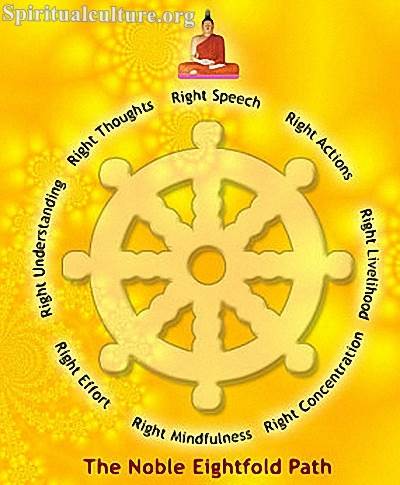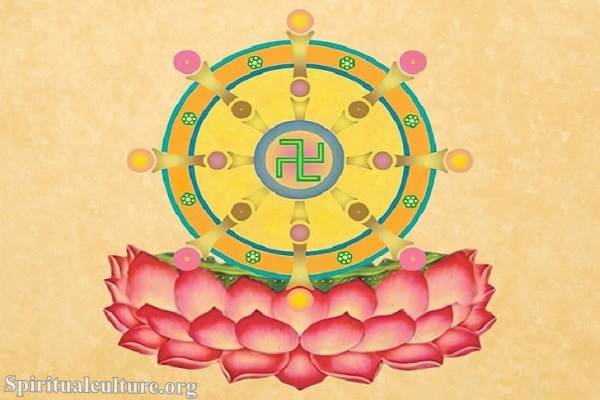Let’s learn about the Eightfold Path with Spiritualculture.org through this article.
Eightfold Path in Buddhism
The Eightfold Path is a central teaching in Buddhism, outlining the path to enlightenment and the end of suffering. The Eightfold Path consists of eight practices: right understanding, right intention, right speech, right action, right livelihood, right effort, right mindfulness, and right concentration. These practices are divided into wisdom, ethical conduct, and mental discipline.

By following the Eightfold Path of Buddhism, Buddhists believe that they can reach nirvana, or a state of peace and enlightenment.
1. Right understanding
This involves understanding the Four Noble Truths and the nature of reality. It is the path’s foundation and helps guide the other practices.
2. Right intention
This involves cultivating thoughts of renunciation, kindness, and harmlessness. It involves the intention to give up negative actions and cultivate positive ones.
3. Right Speech
This involves speaking truthfully, avoiding gossip and harmful words, and refraining from divisive speech. It involves the commitment to communicate in a way that is helpful and beneficial to oneself and others.
4. Right action
This involves practicing nonviolence, avoiding stealing, and living a sexually responsible and ethical life. It involves the commitment to act in a helpful and beneficial way to oneself and others.
5. Right livelihood
This involves choosing a profession that does not cause harm to oneself or others. It involves the commitment to work in a way that is ethical and does not cause harm.
6. Right effort
This involves making an effort to maintain and increase good qualities and abandon negative qualities. It involves the commitment to actively work on improving oneself.
7. Right mindfulness
This involves awareness of the present moment and one’s thoughts and actions. It involves the commitment to be present and aware in one’s life.
8. Right concentration
This involves developing the mind’s ability to concentrate through meditation and other practices. It involves the commitment to cultivate mental clarity and focus.
The meaning of the Eightfold Path
The Eightfold Path is an important teaching in Buddhism because it provides a framework for understanding the nature of suffering and how to end it.
The Eightfold Path is a comprehensive system for cultivating wisdom and virtue and achieving liberation from suffering. It is often compared to a roadmap or a set of guidelines for living a more meaningful and fulfilling life.

According to Buddhist teachings, suffering arises from craving and attachment, and the path to the end of suffering is through the cultivation of wisdom and virtue.
Following the Eightfold Path can cultivate virtues such as wisdom, compassion, and ethical conduct, which are believed to lead to lasting happiness and peace.
The goal of the Eightfold Path is to end suffering and achieve enlightenment, a state of complete liberation from suffering and the cycle of death and rebirth.
The Eightfold Path is often described as a Middle Way because it avoids the extremes of self-indulgence and self-mortification. It is a path of moderation, balance, and mindfulness, and it is believed to be the most effective way to end suffering and achieve enlightenment.
The Eightfold Path is not a set of commandments or rules to be followed blindly but rather a guide for a more mindful and compassionate life. It is not necessary to follow the path in a linear fashion, and it is understood that progress on the path will involve setbacks and mistakes. The important thing is to keep striving to understand the nature of suffering and cultivate wisdom and virtue.




